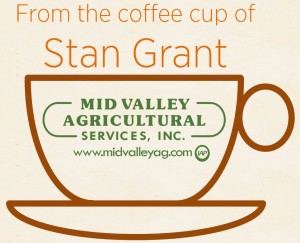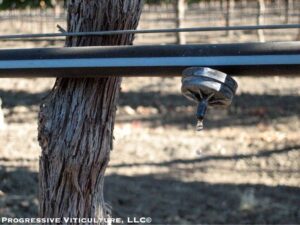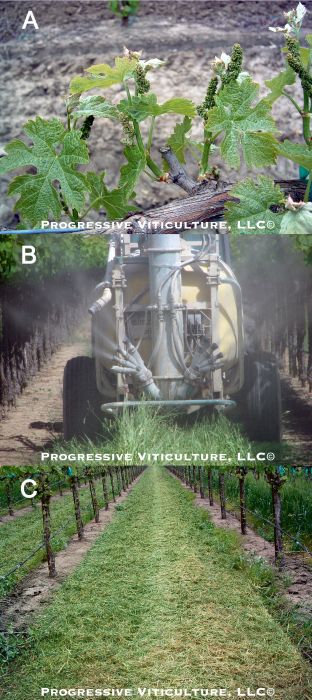 At the most basic level, business management involves setting goals, planning, organizing, staffing, directing, and controlling. Vineyard management, of course, is more complicated than this, especially given large amounts of borrowed capital, increasing regulations, rising investment per worker, intensifying needs for mechanization, the dynamics of the wine grape market, and the increasing sophistication of grape growing and expectations of grape buyers. Also, unlike nonagricultural business endeavors, grape growers must positively influence natural processes within their vineyards, while at the same time, adapting to the vagaries of each growing season.
At the most basic level, business management involves setting goals, planning, organizing, staffing, directing, and controlling. Vineyard management, of course, is more complicated than this, especially given large amounts of borrowed capital, increasing regulations, rising investment per worker, intensifying needs for mechanization, the dynamics of the wine grape market, and the increasing sophistication of grape growing and expectations of grape buyers. Also, unlike nonagricultural business endeavors, grape growers must positively influence natural processes within their vineyards, while at the same time, adapting to the vagaries of each growing season.
To address of these challenges, vineyard managers make a stream of decisions. At times, especially during certain periods of the growing season, the shear number and magnitude of decisions can seem overwhelming. In this article, I have presented some decision-making principles as a reference for those times. Accordingly, they apply mainly to operational or tactical decisions rather than organizational or strategic decisions. These latter types of decisions go into your vineyard management plan (to be discussed in a future Lodi Growers Coffee Shop posting).
Base management plans for average conditions, but be prepared for the atypical and don’t hesitate to deviate from plans whenever necessary. Events during our recent drought provide good examples. Winter rainfall was insufficient to fill the root zones of many vineyards. Those growers that recognized these unusual conditions and took action avoided water stress and related problems. Such actions included irrigating periodically over the winter to sustain moisture around roots in the upper soil and after shoot emerged, initiating scheduled irrigations earlier than normal.

Fig. 1. Alter irrigation schedules during drought.
Have a sound reason for taking action. Applying inputs according to tradition, as insurance, on a calendar-based schedule, or because a neighbor has are rarely sound reasons. On they contrary, they often are costly and inefficient. For instance, a good reason for applying an insecticide is the presence of a damaging pest population with little hope of control by beneficial insects. For powdery mildew control, combination of ever-present fungal inoculum, high susceptibility of wine grapes to disease, and very low tolerance for infected berries at the winery make preventative fungicide sprays and dust applications sound reasons for taking action. On the financial side, making purchases when items are needed is usually the best course unless there are some overriding price or tax avoidance incentives. Most sound reasons for taking actions relate to the goals set down in the vineyard management plan.
Consider all alternatives before taking any action. Obviously, there is more than one means to an end, but the best course of action is not always obvious. Normally, the best action is the one that achieves a desirable result with the least cost in terms of time, money, and risk, including risk of undesirable side effects. This principle also applies to purchases, which usually have only two of the three following attributes from which to choose: cheap, fast, and good. Of course, decisions involving great risk, great expense, and long lasting effects deserve the most thorough consideration. Fortunately, these are usually strategic decisions that are not time sensitive. In all cases, selecting a sound alternative depends on reliable information as well as careful evaluation.
Control what you can. Given there are so many factors beyond the control of the vineyard manager; it seems prudent to affect those that are controllable when reasonable to do so. Moreover, it is generally better to be proactive and to error on the side of caution than to regret not taking action later. For example, we do not know whether or not we will have another damaging frost this spring, but it is best to manage the environment within frost prone vineyards or sections of vineyards as if we do.
On this surface, the “control what you can” principal may sound like insurance and contrary to the “have a sound reason for taking action” principal. When practiced properly, however, the former will agree with the latter. Using our example, it is reasonable to take proactive steps to minimize frost damage when a vineyard has a history of frost and not taking action could result in significant crop and revenue loss.
When there are too much to do with the available resources, prioritize. This situation most often happens early in the growing season. For instance, there may be the simultaneous need for fertilization, fungicide spraying, and cover crop mowing (fig. 2).

Fig 2. Example prioritization: restricted shoot growth
versus fungicide spraying versus cover crop mowing.
Any one of the three may take precedence, depending on the growth vigor of the vines as it relates to the mineral nutrient supply, environmental conditions that favor disease, and competition between the cover crop and vines for soils resources, respectively. Naturally, conditions involving substantial dollars, a high potential for financial gain or loss, and long-term or nonreversible consequences are a top priority.
Surveys of farm business records from several states indicate that about 25 % of farming operations are very profitable while another 25 % make little profit or operate at a loss. While many factors impact farming profitability, quality of management decisions is certainly primary among them. Understandably, managers of consistently profitable vineyard operations do not always make perfect decisions, but they consistently strive to do so. Their success stems from the careful and systematic formulation of their decisions, the execution of actions to the best of their abilities, and should their decisions fail to achieve the desired result, their quick reactions to remedy the situation.
This article was originally published in the Mid Valley Agricultural Services January 2009 newsletter.
Further Reading:
Bererlein, JG; Schneeberger, KC; Osburn, DD. Principles of agribusiness management. 4th ed. Waveland Press; Long Grove, Il. 2008.
Kay, RD; Edwards, WM. Farm management. McGraw-Hill, New York. 1994.

